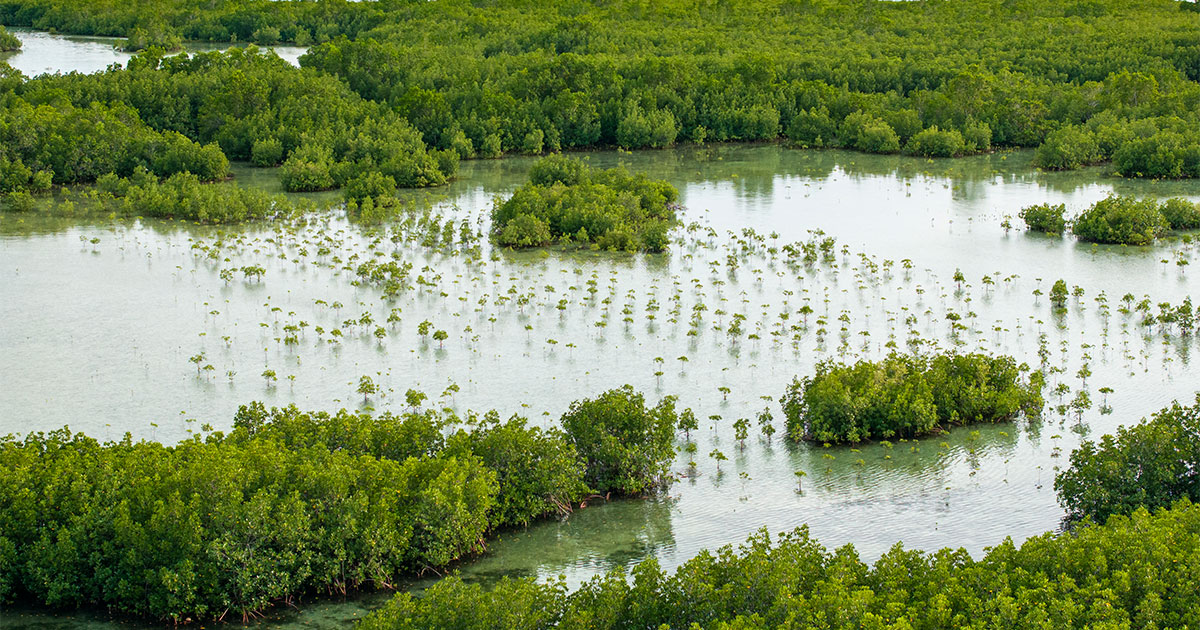By teaming up and creating the Malizia Mangrove Park, Team Malizia is actively working to protect mangrove forests and positively impact climate change. This invaluable ecosystem serves as nature’s coastal guardian and carbon capture hero but is also under threat. The Malizia Mangrove Park has reached a significant milestone in its restoration efforts: one million mangroves.
Together with the Mama Earth Foundation, Team Malizia created the Malizia Mangrove Park in the Philippines where half the mangroves were lost over the past 100 years. In teaming up with the Davao Oriental State University and local community, the goal of the park was to plant one million mangroves next to the existing ones.
“Thanks to donations and help from our partners, we are pleased to announce that we have accomplished our goal of one million mangroves”, said Boris Herrmann. “It seemed like such a big yet achievable number when we created the park in 2020. Through years of enduring efforts and donations, the Malizia Mangrove Park makes an important contribution to the restoration of this coastal ecosystem, provides a better income for local residents, and the mangroves bind large quantities of carbon dioxide. We are not finished and efforts still need to be made to fully restore the local ecosystem, so we are now setting the new goal of two million mangroves.”
The Team Malizia skipper added: “Numbers aren’t our most important goal though. Our aim is to restore the coastal ecosystem to a point where the mangroves can reproduce themselves and no further human help is needed. That’s the whole idea of the park: planting mangroves in a sustainable way, with the knowledge of experts from the local University led by Dr Lea Jimenez, and by involving the local community in the restoration process. The million mark is to break down what seems like an impossible task into achievable milestones and push us to continue taking further action to protect an invaluable ecosystem.”
Mangrove forests grow mainly in tropical and subtropical regions near the Equator, typically along coastlines or rivers affected by tides. They protect the coasts from big storms and even tsunamis, and they prevent erosion and the destruction of coral reefs by stopping overflowing sand and violent waves. They also absorb nutrients, stabilize reef salinity, filter, and trap sediments, which in turn allows the nearby coral reefs to thrive. The mangrove ecosystem is an important habitat for a diverse range of species and rivals rainforests as a highly productive region of diversity. It also increases fish populations and therefore provides fishermen with better income.
Scientists have discovered that mangroves can capture and store very large amounts of carbon dioxide. They are capable of soaking up around five times more CO2 from the atmosphere than the trees in the rainforest, and 70 times more than the trees in European forests. Their crucial function as carbon sinks has also been pointed out in a report published by the IPCC. However, mangrove forests have been reduced to less than 25% of their natural extent, over the last 50 years, huge numbers of mangroves have been logged to make way for holiday resorts and shrimp-farming.
In Pujada Bay, mangrove seeds from various native species are collected near the Malizia Mangrove Park and experts from the local university decide which seedlings need to be planted and when. Students and forest managers of the Mama Earth Foundation oversee the upbringing of seedlings in the nurseries and the planting operations for which people from the local community are hired, creating local jobs. Over the following months and years, they monitor the growth and strengthening of the mangroves.
The restoration efforts receive support from donations worldwide, with some of Team Malizia's main partners seamlessly integrating donations into their daily operations. For example, EFG International includes donations in their new joiners' package, and Zurich Gruppe Deutschland is also supporting with regular donations. Active contributors encompass anonymous donors, fans, partners, and friends, including Weatherdock AG or artist Heinke Böhnert, who raises funds through the sale of her paintings. The public can donate directly here on the park’s website or support the park by buying any item in the recently launched Malizia Shop, as Team Malizia donates a mangrove for each purchase.
"Whether big or small, through one-time or sustained contributions, every mangrove counts. We are incredibly thankful for this collective support, which has enabled us to achieve this tremendous goal," commented Boris Herrmann. "We hope that as we sail around the world our message inspires more people to take action, to create a positive impact on the region, and that together we can soon achieve another milestone in these restoration efforts."



